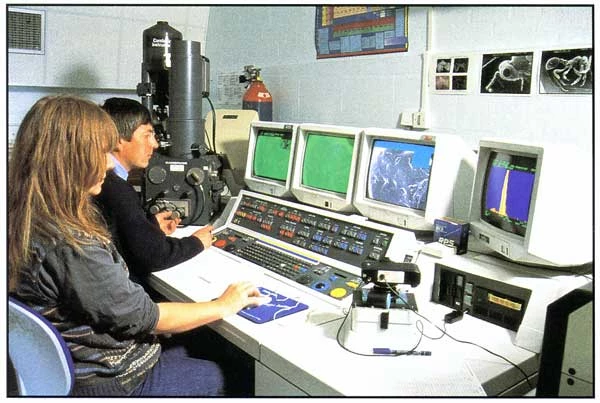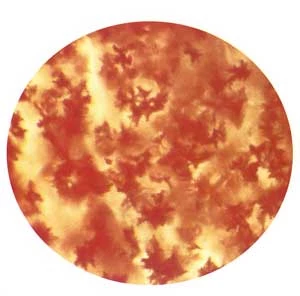Celtic Art - Origins and Myths
The Celts
The Late Iron Age harness piece from Alltwen
Study of 'Celtic' art styles on metalwork helps us to understand the peoples of the Iron Age in Europe. La Tène art, as it is more properly known, was used across Europe, from the late 5th century BC onwards. This was a form of art uniquely different from that of the classical Mediterranean world, employing natural forms in a free-flowing style.
Early La Tène styles were thought to have been made by the Celts, a people who shared common languages, societies and similar pagan religious beliefs. Recently, this view has been challenged; experts today believe that similar metalwork styles show that this art form was passed on across cultures and not necessarily retained within one common ethnic identity.
Wales has many fine metalwork discoveries decorated in La Tène art styles, examples of which are housed at National Museum Cardiff.
Glass enamels
Analysing the samples using an Scanning Electron Microscope
A technique mastered by British metalworkers from the 3rd century BC onwards was the application of red 'enamel' to decorated metalwork. It is in fact a type of glass applied by cutting pieces to shape; the pieces were then carefully heat softened and finally pressed into the metalwork. A specimen decorated with La Tène art, with red enamelling, has been discovered at Alltwen near Pontardawe (Neath Port Talbot) and purchased for Amgueddfa Cymru.
The discovery raises questions about Welsh enamelled and decorated artefacts from the Iron Age. How similar (or different) were the metal and glassworking traditions in north and south Wales? Did the Severn Estuary act as a barrier, or as a cultural focus for metalworkers between south Wales and south-west England during the later Iron Age? How do these 'enamels' (glasses) decay?
Removing samples for analysis
Crystals of cuprite within the glass matrix
The items chosen for the study include a piece of horse-harness from Cardiff, the Snowdon Bowl (Gwynedd) with its cat-like motif, and selected horse equipment from the Seven Sisters Hoard (Neath Port Talbot), in addition to the Alltwen find. Tiny samples of enamel were taken from the artefacts; these were mounted and polished on microscope slides. Analyses of samples were conducted using a Scanning Electron Microscope and X-ray analysis.
Additionally, the structure of the enamels was studied, through transmitted and incidental light, using a polarising light microscope.
Results from the analysis show 'soda-lime' glass, containing large amounts of lead and copper. These are responsible for the brilliant red colour and the opacity of these glasses. Their manufacture is technically advanced and can only be produced by careful control of both the ingredients of the glass and the furnace conditions.
Results show that enamelled artefacts from south Wales match reasonably well with those from south-west England; however the enamel on the Snowdon bowl from north Wales is markedly different from the others. This suggests differences in the manufacture of these glasses across different regions of Wales.



Comments - (2)
CONGRATULATIONS ON YOUR FANTASTIC FiIND!!!. Please don't give up asking for the wearabouts of it . After it has been examined completely it should be put in a safe place where the interested public can view it easily .
CONGRATS AGAIN !! I hope you got an award for finding it .????